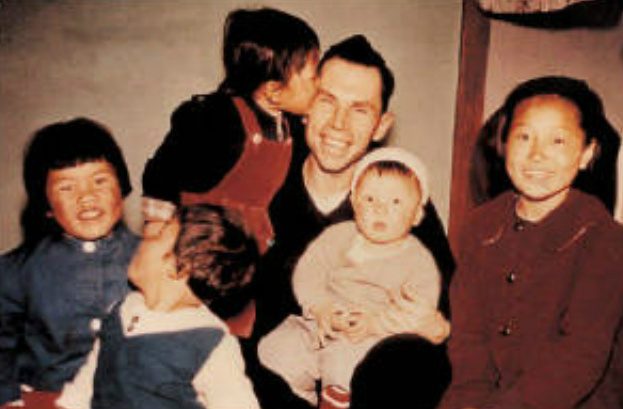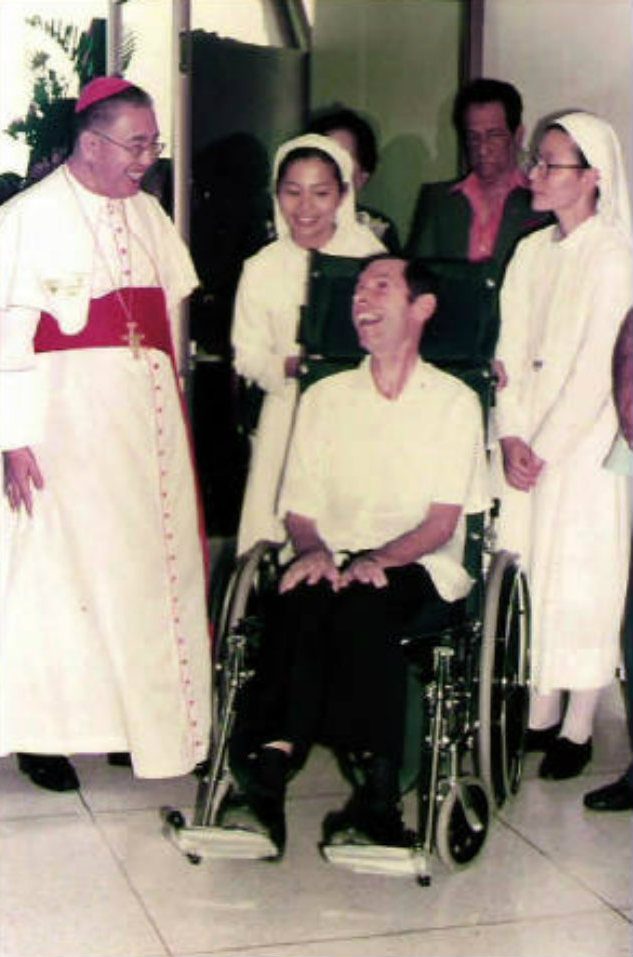SUMMARY
This is AI generated summarization, which may have errors. For context, always refer to the full article.

MANILA, Philippines – The priest who established the Boystown and Girlstown programs in the Philippines, and is buried in Cavite, moved a step closer to sainthood after Pope Francis recognized his “heroic virtues.”
Days after his trip to the Philippines, Francis approved a decree on the “heroic virtues” of Father Aloysius Schwartz, an American who ran charity programs in the Philippines from 1986 to 1992.
The Pope also authorized on Thursday, January 22, other decrees on the heroic virtues, martyrdom, or miracles of 10 other “servants of God.”
With the Pope’s go-signal, Catholics can now consider Schwartz as “venerable.”
This means the American priest is at least two steps away from becoming a saint, a person considered by the Catholic Church as a model and intercessor.
Schwartz helped thousands of poor children in the Philippines through shelters called Boystown and Girlstown in Manila, Cavite, and Cebu, according to the official website of the Sisters of Mary Schools in the Philippines, which Schwartz founded.
He died at Girlstown in Manila on March 16, 1992, because of Amyotrophic lateral sclerosis or Lou Gehrig’s disease. He was buried at Boystown in Silang, Cavite.
Ramon Magsaysay awardee, too
Born in the United States on September 18, 1930, Schwartz became a parish priest in Korea in the 1960s.
Schwartz later founded two Catholic groups: the Sisters of Mary in 1964 and the Brothers of Christ in 1981.

He started Boystown in Seoul, South Korea, in 1975 and Girlstown in Busan, South Korea, in 1978.
For his work in Korea, he received in 1983 the so-called Nobel Prize of Asia – the Ramon Magsaysay Award, named after a former Philippine president known for helping the masses.
In 1985, Schwartz brought Boystown and Girlstown to Manila, Philippines, after then Manila Archbishop Jaime Cardinal Sin invited him.
Boystown and Girlstown officially began in Manila in 1986, according to www.fatheralsainthood.org, a website devoted to pushing for Schwartz’s sainthood.
These programs eventually reached other parts of the Philippines – Cebu in 1990 and Silang, Cavite, in 1991. It also began in Mexico in 1991.
Schwartz’s virtues prompted the the Catholic Church in the Philippines, in 2003, to begin to work to have him declared a saint.
Miracles required for sainthood
In 2012, the cause for his sainthood gained much momentum. Back then, Manila Archbishop Luis Antonio Cardinal Tagle, among others, submitted to the Vatican a document on Schwartz’s virtues.
Vatican theologians examined this document and, convinced that Schwartz lived a life of holiness, passed it on to higher Catholic authorities. The endorsement of Cardinal Angelo Amato, prefect of the Congregation for the Causes of Saints, prompted Francis to recognize Schwartz as venerable.
This is the first of 3 basic steps to sainthood, according to the United States Conference of Catholic Bishops (USCCB): “a candidate becomes ‘venerable,’ then ‘blessed,’ then ‘saint.’”
“Venerable” is “the title given to a deceased person recognized formally by the Pope as having lived heroic virtues,” the USCCB said.
“Blessed” is the title given to a “venerable” who helped produce at least one miracle through his or her intercession. The Catholic Church officially considers a person as “blessed” in a ritual called beatification.
To ensure that each reported miracle is divine intervention, the Vatican subjects them to stringent scientific and theological examination.
If a second miracle is attributed to a “blessed,” the “blessed” becomes a “saint.” The Pope officially lists a person as a saint in a ritual called canonization.
The Philippines has two saints: Lorenzo Ruiz, who was canonized in 1987, and Pedro Calungsod, canonized in 2012.
The Catholic Church in the Philippines is pushing for the sainthood of more Filipinos. Among them is a Spanish-era nun, Mother Ignacia del Espiritu Santo, whom then Pope Benedict XVI declared as “venerable” in 2007. The street of broadcast giant ABS-CBN in Quezon City is named after her. – Rappler.com
Add a comment
How does this make you feel?
There are no comments yet. Add your comment to start the conversation.